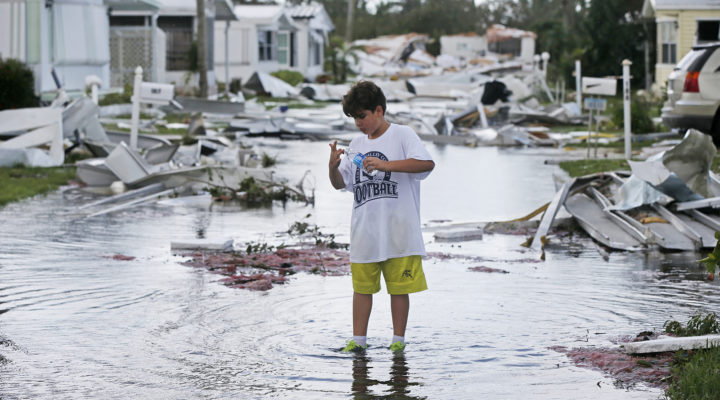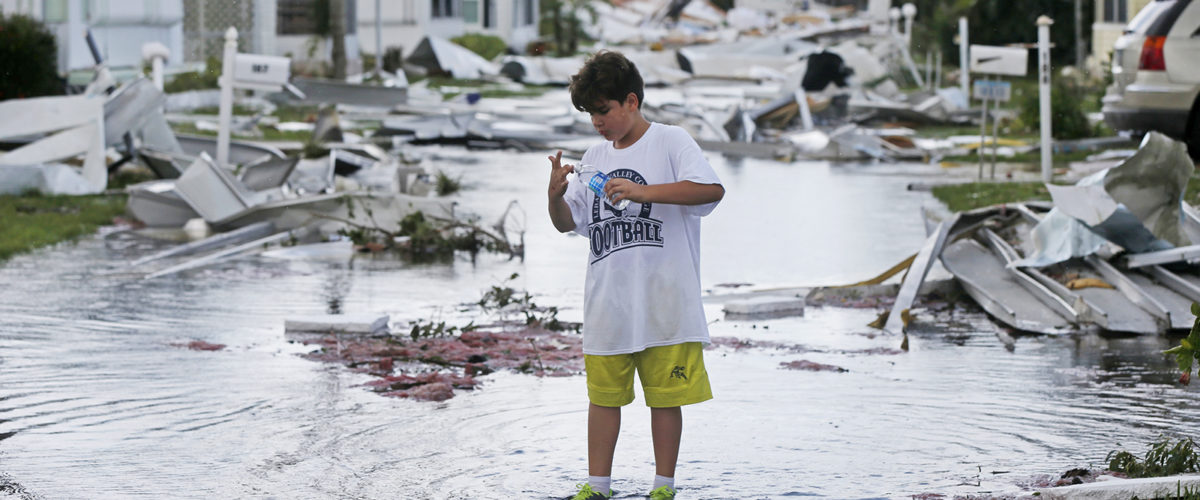Another week, another disaster. Hurricane Harvey drowns parts of Texas and Irma follows by drenching all of Florida. Are there enough rescuers, volunteers, trucks and helicopters to respond?
Experience shows that there will be.
But when it comes to financial contributions — that may be a different story.
In April 2013, a fertilizer plant explosion destroyed much of West, Texas, a small town located just north of Waco. Fifteen people were killed, hundreds of homes were flattened. Federal, state and religious organizations poured in — along with money.

A fertilizer plant explosion in April 2013 destroyed much of West, Texas.
Just over a month later, several days of tornados ravage parts of the country, including a gigantic twister that tore through Moore, Okla., and nearby communities, killing 24.
Donations quickly dried up for the recovery in West, said John Crowder, pastor of First Baptist Church in that city.
“That huge tornado hit Moore about a month after our explosion and we saw a dramatic drop in contributions almost immediately,” Crowder said. ”We were not offended, because the people in Moore needed help desperately but we did notice the dramatic change.”
First Baptist became the hub of relief and recovery efforts after the explosion. Crowder coordinated much of the work.
“Also, remember the Boston bombing happened two days after our explosion. The nature of that event drew a great deal of attention — as it should.”
But the number and dedication of people willing to help did not lesson, Crowder said.
“We didn’t notice a decrease in volunteers. The help we received from people all over the state was amazing all the way through.”
And the commitment of human and material resources seems to be available for storm victims in the Lone Star and Sunshine states after their respective storms.
Recovery teams were already gearing up for Irma even before the hurricane made landfall in the U.S. and the Caribbean islands beforehand. And that was being done even as they were ramping up efforts in Texas.
The Salvation Army announced Sept. 8 that it was activating all of its Florida units, from Pensacola to South Florida, to prepare for Irma.
“Along with the 32 canteens (mobile kitchens), The Salvation Army also has a fleet of equipment which includes two bunkhouses, two shower trailers, one generator and a Ford utility truck, which will be deployed as needed to the Hurricane Irma impacted areas,” the organization announced online. “The Salvation Army has more than 3,000 trained volunteers and staff in Florida, ready to offer a warm meal, bottled water, coffee or offer emotional and spiritual care.”
Those who want to contribute may do so online at helpsalvationarmy.org or by calling 1-800-SAL-ARMY. Donors may also text “Storm” to 51555.
The Atlanta-based Cooperative Baptist Fellowship said it has been following Irma’s progress even as it ramped up efforts in the Houston area following Harvey.
The Fellowship provides disaster response services — long term recovery from natural and human-made disasters.
“CBF is networking with national and state partners in preparation to assist as requested,” it said in a blog post. “CBF and CBF Florida are in contact with partners in Puerto Rico, Haiti, Bahamas, Cuba and Florida. CBF will work with all affected CBF state and regional organizations, the Federal Emergency Management Agency, the National Voluntary Organizations Active in Disasters (VOAD), as well as other local and national partners in any response.”
CBF is accepting contributions online.


